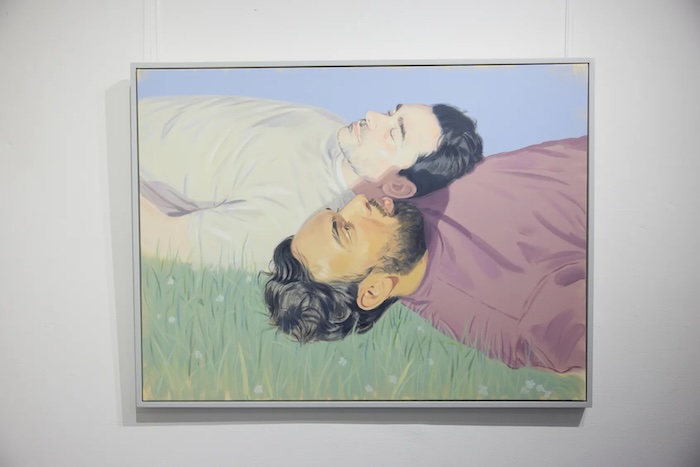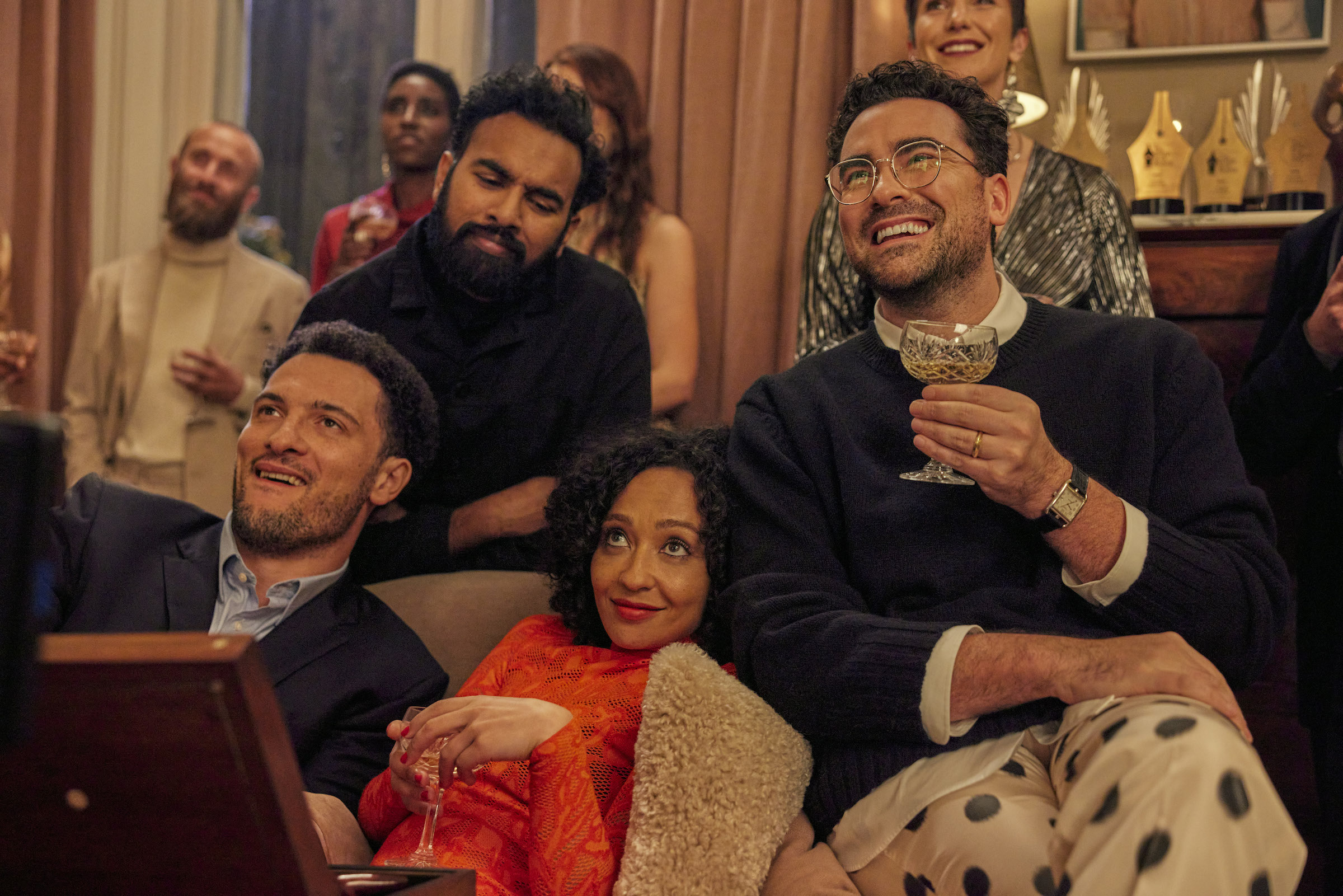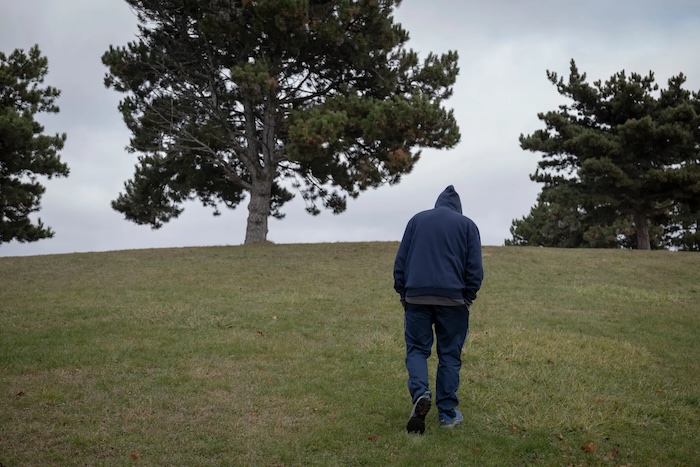— In interviews with people who were dying, we learned they wanted to mark their final days with meaningful experiences and leave their affairs in order. It’s time to reset logistics, last days and legacy.

He died fuller of faith than of fears,
Fuller of resolution than of pains,
Fuller of honour than of days.
Inscription, Westminster Abbey, 1631
Why do we so often die badly? How does it happen that so many of us arrive at the end of life unprepared for the journey? Somehow, we are stumped when it comes to creating a better model of dying. Our unique qualities as individuals are lost in the processes of medical institutions and funeral homes. For those facing our last days, we have a pretty good sense of what’s involved.

Twenty years ago, I started a nonprofit organization called Older Adults Technology Services (OATS) based in New York City that helps senior citizens build new models of aging while learning technology skills. We use design thinking methods to create new programs for social impact, using approaches like co-creation, prototyping and customer satisfaction metrics.
We met with people in their hospice beds, in their homes, and on one adventurous occasion, in the Fabergé room at the Metropolitan Museum.
Recently we turned our innovation lens toward what was happening with older people in end-of-life situations to see if we could design new programs to help them. Using a design thinking methodology, we met with people who were dying and asked questions like, “What is a good day like for you?” and “If you could change one thing about your end-of-life process, what would it be?”
We met with people in their hospice beds, in their homes, and on one adventurous occasion, in the Fabergé room at the Metropolitan Museum. Some had been told they had months left, while others were living with just a few weeks in their prognosis. We visited other hospices around the country and spoke with social workers, chaplains, elder law attorneys and service providers. We read books on death and dying by Caitlin Doughty, Atul Gawande and Richard Rohr. We had weekly review sessions and talked to experts on business planning and branding and customer experience design.
We Are Failing at Dying
Here is what we learned.
We are failing at dying. Instead of a time for growth, deep connection, reflection and deliverance, our ends of life are consumed by petty distractions and institutional imperatives. The dying people we interviewed had not given up on life; rather they were full of desire to mark their final days with meaningful experiences and leave their affairs in order.
Yet almost everyone expressed sadness and frustration that they lacked a path for the right kind of death, the kind of passing that would reflect well the kind of life they had lived and the essence of the person they had become.
People described an entrenched group of institutions, resistant to change and wielding enormous power, which have grown to dominate the last stage of life — hospitals, funeral homes, home care agencies, religious organizations. When asked what they wanted instead people asked for three kinds of help: logistics, last days and legacy.
We were expecting ruminations on the duration of the soul, and instead people were preoccupied with getting the sheets clean and arranging pet care.
The Burden of Unmet Tasks
“Do you know someone who can come clean out my attic?” asked one woman in her fifties, fighting cancer and concerned that her overworked and grieving husband was sinking under the weight of daily tasks such as lawn mowing and housework. It was a startling response, in a bedside interview, to the question, “what’s most important to you now?” We were expecting ruminations on the duration of the soul, and instead people were preoccupied with getting the sheets clean and arranging pet care.
Logistics, it turns out, are top of mind for people who are dying. One woman spoke of her satisfaction in having arranged her funeral details and even set aside a dress to wear in her coffin. In an echo of Maslow’s famous hierarchy of human needs, the quotidian tasks form the base of the pyramid, and it seems difficult for people to elevate their thinking while still burdened with a laundry list of unmet tasks.
Many people commented on the need for legal help with logistics; writing wills, advance directives, health care proxies and financial plans. For many people, procrastination on legal matters resulted in family conflicts, loss of control over health decisions and anxiety about financial losses.
Unfortunately, once people were already in hospice, it was sometimes too late to interview lawyers and schedule notaries for important documents. Critical decisions about health, finances and death planning were left to caretakers and service providers, leaving the dying individual with little control over final decisions.
Death Needs a Reset
Being able to choose the location, activities and company of one’s last days was a recurrent theme. Despite being just days from passing, people expressed interest in writing articles, visiting museums, doing last trips with family members and exploring culture. My organization was able to arrange a robot tour of the Whitney Museum for one woman, who drove a telepresence robot around the museum from her hospice bed in Connecticut. At the end of the day, she drove the robot to the window and silently watched the sun setting over the river.
One clear message emerged from the interviews: death needs a reset. The handoff from doctor to hospice nurse to priest to funeral director is no longer the only path.
Finally, hospice patients were predictably focused on their legacies. We spoke for hours with people about their thoughts on post-death rituals, the value of a personalized funeral and the services that might help them express their individuality after passing. There was a great deal of openness to modern, innovative funeral approaches— “living funerals,” celebratory parties after death and eco-friendly caskets and cremations.
One clear message emerged from the interviews: death needs a reset. The handoff from doctor to hospice nurse to priest to funeral director is no longer the only path. What’s at stake is no less than our self-determination as free individuals. Like any life transition, death is a chance to explore and express ourselves in our mature stage, when we have perhaps the most important things to say. Modern culture offers endless chances for tailoring this most personal of events to our unique needs, but our social discomfort talking about death blocks us from acting.
Time for Innovative Thinking
We need a new approach to this experience, with higher expectations and more focus on dying well, not just expiring.
We found some truly innovative models in our research: “death cafes” where people gathered to explore themes of mortality and end-of-life planning; alternative hospices such as the Zen Hospice in California and Regional Hospice in Connecticut; digital death planning apps and sites such as Everplans and Everest Funerals; community learning programs run by the Plaza Jewish Community Chapel; and a national dialogue and events series sponsored by the San Francisco-based nonprofit Reimagine. Unfortunately, these programs only serve a small percentage of those who want them.
Here is a vision for reshaping end-of-life services and systems in accordance with what people asked for in the interviews.
Logistics: We need insurance and financial products that recognize the need for intensive health and personal assistance during the end-of-life period and provide enhanced benefits for people who need them. Government might create tax-free plans for legal fees associated with end-of-life plans, and the service sector should increase programs to ensure that people over the age of 60 have a legal will, advance directive and other necessary basic documents.
Last days: Incubate and accelerate a new service sector focused on proper preparation and programming for end-of-life. As major life transitions go, dying is on a par with getting married or having children, so let’s build an industry of death services to rival wedding planners and baby showers. Bring on the social entrepreneurs!
Legacy: Encourage innovation at end of life. We spoke to several innovators who had to pursue legislative recourse to overturn outdated regulations that restricted new approaches in hospice and funeral care. New York City has over 10,000 nonprofit organizations but only one nonprofit funeral home. We need to open the sector to more innovation and reduce regulatory barriers to innovation.
Fear of death and decline holds a strong sway over our minds as we age, and it’s no wonder that we are reluctant to face it. But the longevity revolution means we are living longer and expecting more from each day of our lives, and technology is adding powerful tools for managing our last days and legacies. We need a new approach to this experience, with higher expectations and more focus on dying well, not just expiring.
Complete Article ↪HERE↩!
Good Grief Gives Grief a Home For the Holidays

Art is the linchpin of Good Grief, a warm dramedy set in the heart of winter, out in theaters on Dec. 29 before coming to Netflix on Jan. 5. It’s a film that feels like snowfall: a gradual accumulation of a blanket of muted comfort. Dan Levy, who wrote, directed, and stars in the film, plays Marc, who is guided through grief by his best friends, Sophie (Ruth Negga) and Thomas (Himesh Patel) in the wake of his husband Oliver’s (Luke Evans) death. An artist who used to paint, Marc finds his way back to the canvas as he heals.
The Marc we meet at the beginning of Good Grief is diminished—he stopped painting after his mom’s death, finding it too painful. Before Oliver died, Marc still made art, illustrating his husband’s books. But he shrank himself to magnify his husband. Now, he’s lost his partner. The people around him encourage him to pick up the paintbrush again.
We learn over the course of the film that Marc and Oliver’s marriage was far from perfect; Marc holds his complex emotions about Oliver’s death at arm’s length, watching them circle the drain, but never quite emptying the bath water. First Thomas, and then a lover, Theo (Arnaud Valois), nudge him toward art to help him heal.
“If you have the ability to write or to paint, sometimes that’s all you can do,” Levy says in an interview. “It might not look like the sobbing, fall-down-the-wall, on-the-floor hysteria that we’ve come to equate with grief or with loss. And that’s OK.”

Levy himself is not a painter. When he got the green light for the film, his first move was to solicit the help of one of his favorite artists, Kris Knight. Levy called Knight, whose work he’d been collecting for a decade, and asked him to be a shadow painter for his character.
Just a week before Levy’s call, Knight had a conversation about the 1998 Alfonso Cuarón movie Great Expectations, in which the Italian contemporary artist Francesco Clemente painted for Ethan Hawke’s character, Finn. Knight was 18 when Great Expectations came out, and it inspired him to pursue art. Now it was his turn to paint the art that we see onscreen.
“It was important that the art stand out, that the portraits have a very distinct point of view,” Levy says. “The work had to reflect that emotionality, so that the audience can understand why he took a break from it and why he then would return to it.”
Knight’s work slots neatly into Marc’s character, interlocking like one had a notch carved for the other. Like Marc, Knight has illustrated book covers. (Most recently the forthcoming Henry Henry by Allen Bratton, a queer reimagining of Shakespeare’s Henriad.) “His romantic paintings and portraits are simultaneously intimate as they are remote,” reads Knight’s website. “Halcyon queer moments have impact without being sensationalized.”

Knight tries to paint different modes of masculinity that he connects with, he says. He likes softness and darkness, and he loves humor and history. Melancholy seeps onto the canvas, as does most of what he absorbs, consciously or otherwise. Something similar happens for Marc in the film: He leaves the suffocating comfort of his home in London, where he lived with Oliver, to paint in the sharper, starker seaside of Kent.
“With my art, it comes from a queer lens, and I can’t do anything about that, just because that’s who I am,” Knight says. He interviews those who sit for his portraits, usually other queer creatives, and one of his main questions is about their coming out experience. It binds them together over generations and social and economic backgrounds.
Knight estimates that he made 15 to 17 pieces for the film, many of which are on display in a final, cathartic gallery scene.

“I connected with this story in terms of it being basically a new look on grief, and it’s a queer lensing of grief,” Knight says. “And that’s something I haven’t seen in film before. Especially with the character dynamic of Oliver and Marc: I see that in straight film, and I see that in straight couples, where one partner kind of lives for the other.”
Knight and Levy both lost grandparents during the pandemic, a window of time that even further distorted our already slippery understanding of grief. For Levy, that grief spawned an onslaught of questions: “Is there an appropriate way to grieve? Why was I not feeling what I thought that I should feel? Was it enough?”
Good Grief airs those questions out loud, though it doesn’t necessarily answer them. “If it’s not saying explicitly what you should do, I think it’s a cautionary tale of what maybe you shouldn’t,” Levy says. “To write Marc as an avoidant, it felt important, because I know so many people that choose the distraction over the confrontation.”
Good Grief is also, above all, a love letter to found family, to the friends who “help [detangle] that knot of feelings,” as Levy wrote in his director’s statement. In the movie, Thomas and Sophie buoy Marc with quiet acts of care, keeping him afloat. In Levy’s own life, he came out as gay to his friends first, unsure how the news would change the dynamic of his relationships with his family.

“My friendships are the great loves of my life,” Levy says. “And the idea of telling a story where the romance was the friendship felt really important to me.”
Toward the end of the movie comes a monologue from beloved British icon Celia Imrie, who plays Marc’s lawyer, Imelda. She’s helping Marc parse through Oliver’s will and offers him advice that, as he was writing the script, Levy felt was like an epiphany of sorts, a potential answer to his many questions.
“Physiology has a clever way of protecting us from what we perceive to be a threat to our bodies,” Imelda tells Marc, “which is why the more we close ourselves off, the less we feel.”
“And you can survive that way, until the usualness of it all starts creeping in, and the new life you’d built as a refuge begins to feel like a void,” she continues. “Because, as it turns out, to avoid sadness is also to avoid love.”
Complete Article ↪HERE↩!
I Promised My Sister I Would Write About How She Chose to Die

By Steven Petrow
On the day before my sister Julie died, I lay down on her bed and held her gingerly in my arms, afraid that any pressure would hurt her. She had lost so much weight that she looked like a stick figure I might have drawn when we were kids. As her body had wasted, her tumors had grown — now several of them bigger than baseballs. Her abdomen looked like the lunar landscape, with protrusions everywhere, the sources of her pain plainly visible.
Two and a half months earlier, her oncologist explained that these tumors might soon block the liver’s ability to drain properly, resulting in liver failure, usually a fast and painless death. “It will be as though you’re going to sleep,” I remember him telling us on a Zoom call.
That had not happened. Those tumors continued to grow. No matter the doses of fentanyl and morphine, Julie cried out in pain, the only time during her long illness that she suffered like that.
On the bed, Julie and I said little as I smelled her hair, rubbed her back and told her how much I’d miss her. Born five years apart (I am the elder), we were a pair of matching bookends — from our teenage years, when we’d go to our respective queer bars, to later in life, when each of us faced a cancer diagnosis. I asked if we had anything unresolved between us, as my therapist had suggested. “Nope,” my sister replied. “I don’t want to leave you all, but it’s time.”
A few hours later, she joined the rest of the family for our last supper together. I don’t remember much of the evening; either I failed to capture that memory or I’ve erased it, too painful to keep. I do recall Julie had one bite of a friend’s homemade Key lime pie. Apparently, a sweet tooth never dies, even if you are about to. Before bed, Julie hugged and kissed each of us: her wife and two daughters; my brother, Jay, and his wife; and me. Tucked in under the covers, I pulled out my iPhone to continue a ritual I’d recently begun with my siblings. From the guest couch, I texted:
Steven: Good night, sibs
Jay: Good night 😘
Julie: Good night to the best big brothers in the whole world 💚💙❤️
Jay: Love you to the moon and back!!
Steven: And to the bestest sister ever
***
Two months earlier, I joined a conversation my sister and her wife were having with a social worker, a new member of their hospice care team. They kept discussing “the MAID,” which I soon came to understand is the acronym for the New Jersey law referred to as Medical Aid in Dying. It allows New Jersey residents with terminal illnesses to choose to end their lives by taking a cocktail of life-ending medications.
This important piece of legislation was enacted in 2019, and as of last year, 186 people had chosen to die this way. (That’s a very small percentage of annual New Jersey deaths.) Julie, a lawyer, had done her research and had told me that the Garden State is one of only 11 jurisdictions (10 states and the District of Columbia) that allow medical aid in dying, also known as death with dignity and end-of-life options.
If you live in one of the other 40 states, you must wait for the Grim Reaper to pay a visit, no matter how much pain and suffering that entails. Nor can you pack up and move to New Jersey (or most other states where MAID is legal), because you must be a resident to qualify, which, at best, can take time. Time is usually not readily on hand for those who are terminally ill.
In late 2017, Julie learned she had advanced ovarian cancer. Since then, she’d endured one nine-hour surgery, six rounds of chemo, three recurrences and two clinical trials. “Enough,” my sister told her oncologist a few days before her 61st birthday, in April of this year. “I’ve decided to end treatment,” she added, to make sure he understood, and then sang, off-key, the famous Carol Burnett song, “I’m So Glad We Had This Time Together.” She asked, “How much time do I have left?” His reply: “Two or three months, at the most.”
My sister understood from Day 1 that she’d most likely die from this cancer, which, when advanced, has a mortality rate of 80 to 85 percent, according to Dr. Jason Konner, a gynecologic oncologist in New Jersey. One by one, women she had befriended in an online support group died, their last weeks and days often made awful by what Julie called “Hail Mary” treatments — drugs, many with harsh side effects, often used out of desperation or denial.
“I do not want to die like that,” my sister told me repeatedly. “This is about me taking control of my life.” She added, “I want you to write about this after I’m gone, because not enough people know about this option, even when it’s available.”
She was right. Few of our friends knew of this option, even those living in New Jersey. Kim Callinan, the chief executive of Compassion and Choices, a nonprofit that led the effort to pass New Jersey’s MAID legislation, told me these “laws are meaningless if patients are not aware they exist, which is why we focus on public education during the first five to 10 years after a jurisdiction has authorized medical aid in dying.”
The doctor’s sobering “two to three months” estimate easily qualified Julie for MAID. But that was about all that was straightforward. To hear opponents of the right to die talk, you’d think it was easy to obtain the life-ending medications. New Jersey and most other states where MAID is legal require a patient to be a mentally capable adult resident diagnosed as being terminally ill by two doctors. Julie had to request the drugs twice verbally, with a minimum of 15 days in between each request. At the time of the second ask, she had to be given the opportunity to rescind her directive. The law also required her to sign a written request in the presence of two witnesses, one of whom could have no financial interest in her death.
Julie persisted.
In recent months, lawmakers in at least nine other states have introduced MAID legislation, but opponents remain adamant. As recently as last year, Pope Francis condemned assisted suicide, saying, “We must accompany death, not provoke death or help any kind of suicide.” Other objections come from advocacy groups like the National Council on Disability, an independent federal agency that advises on government policies affecting people with disabilities; the council fears the potential exploitation of vulnerable people, especially if they feel they are a burden to family members. Julie was well aware of these concerns, but she believed MAID’s built-in safeguards prevented such exploitation.
***
With the MAID request approved, Maddy, Julie’s spouse of 35 years, picked up the prescription from a local pharmacy. The price: $900, which is not covered by Medicare, the Department of Veterans Affairs or many private insurance plans. A study published in The Journal of the American Geriatrics Society last year found that 96 percent of people who died by medical aid in dying were white and 72 percent had at least some college education. “The reality is that communities of color, for a wide variety of reasons, also are more likely to utilize aggressive care and less likely to use other end-of-life care options, such as hospice and palliative care,” explained Ms. Callinan. People without the resources to pursue MAID may be forced to make a different choice: suffer through a painful death or take matters into their own hands. “Be sure to include these statistics when you write about this,” my sister directed me.
With her pain unabated, my sister’s next task was to choose the day she would die. Our entire family supported Julie’s decision; still, we did not want to say goodbye. We made silly excuses for why certain days were inconvenient. “I have an invitation to my friends’ 35th anniversary in Provincetown the third week of June,” I blurted out. One of Julie’s daughters said, “I’ve committed to a writing workshop starting July 4.” Julie’s best friend, Jenny, had plans to travel, too. “Please don’t let Julie schedule it before the 25th!” Jenny texted me.
Julie chose Friday, June 30. She gave us four days’ notice, which allowed for time to complete her obituary, finalize the guest list for her memorial and create the program. The day before, my brother handed me a draft of the program for one last copy edit. I’d expected her date of death to be left blank; after all, we could fill it in later. Or maybe I still hoped for a miracle that would make all this preparation unnecessary. But right there, on the program’s cover, I saw dates for the first and last days of her life, her death foretold.
Julie never wavered in her decision, which proved a godsend for the rest of us. That final morning, my sister got up early to write letters to her three girls: her wife and their two daughters. Then she called the insurance company to argue with them about a payment, trying to take one thing off Maddy’s list of to-dos. I heard her say, “I’m doing MAID at noon. I need you to get back to me before then.” That is — was — my sister.
With the sun creeping toward its zenith, Julie took one last walk in her garden, blossoming with hydrangeas, zinnias and some faded irises. Then we twice watched the video Jay had put together for her service — a lifetime of memories condensed into 14 minutes. We took one last family photo, the bookend to hundreds of others, most of them with our Julie in the center. I was confounded by how to pose — a big smile, a little smile, a frown? In looking at the photo now, I think my face looked blank, which was pretty much how I felt.
Before heading upstairs with her wife and daughters, Julie cried for a moment and said softly, “I don’t want to leave you.” A few minutes later, my sister made herself comfortable on the Ultrasuede sofa in her office. Maddy prepared the medications, and after they all recited the Serenity Prayer, my sister gulped it in one shot. Within minutes, she was unconscious, in a liminal state between life and death. Maddy gently laid her wife down on the sofa and then asked Jay and me to come upstairs. I stroked her face; I whispered to her how courageous she was to have made this decision. (After all, it’s commonly said that we lose our sense of hearing last.)
I also vowed to keep my promise to tell this story, a brother’s last act of devotion to a sister he loved beyond all measure.
Complete Article ↪HERE↩!
Death by Doctor May Soon Be Available for the Mentally Ill in Canada
— The country is divided over a law that would allow patients suffering from mental health illnesses to apply for assisted death.

By Vjosa Isai
Canada already has one of the most liberal assisted death laws in the world, offering the practice to terminally and chronically ill Canadians.
But under a law scheduled to take effect in March assisted dying would also become accessible to people whose only medical condition is mental illness, making Canada one of about half a dozen countries to permit the procedure for that category of people.
That move has divided Canadians, some of whom view it as a sign that the country’s public health care system is not offering adequate psychiatric care, which is notoriously underfunded and in high demand.
The government of Prime Minister Justin Trudeau, which has been criticized for its rollout of the policy, has defended its actions by pointing to a 2019 court decision in Quebec that officials say mandates the expansion.
Members of the Conservative Party have accused the government of promoting a “culture of death.” There has also been opposition from politicians on the left who would like the government to focus its health policy on expanding mental health care.
Jason French is among those building a case for why a doctor should help him die.
With copies of a document describing his troubled mental health history tucked in his backpack, he attended an event in Toronto to lobby for making assisted dying available to people like him.
He has severe depression and has tried twice to end his own life, he said.
“My goal from the start was to get better,” said Mr. French, of Toronto, who agreed to share his name, but not his age because so many in his life don’t know about his illness. “Unfortunately, I’m resistant to all these treatments and the bottom line is, I can’t keep suffering. I can’t keep living my life like this.”
But Dr. John Maher, a psychiatrist in Barrie, Ontario, who specializes in treating complex cases that often take years to improve said he was concerned that hopeless patients will opt for assisted death instead.
“I’m trying to keep my patients alive,” he said. “What does it mean for the role of the physician, as healer, as bringer of hope, to be offering death? And what does it mean in practice?”
Canada’s existing assisted death law applies only to people who are terminally ill or living with physical disabilities or chronic, incurable conditions. The country’s Supreme Court decriminalized assisted death in 2015 and ruled that forcing Canadians to cope with intolerable suffering infringes on fundamental rights to liberty and security.
About 13,200 Canadians had an assisted death last year, a 31 percent increase over 2021 according to a report by the federal health ministry. Of those, 463 people, or 3.5 percent, were not terminally ill, but had other medical conditions. Patients who are approved have the option to end their lives using lethal drugs administered by a physician or nurse, or by taking drugs prescribed to them.
There is still uncertainty and debate over whether assisted death will become available to the mentally ill early next year as scheduled. Amid concerns over how to implement it, Parliament has delayed putting it into place for the past three years and could delay it again.
Clinical guidelines were released to address those concerns last March, but some people involved in providing mental health care say they are insufficient.

But supporters say denying mentally ill people access to the same humane option to end their suffering amounts to discrimination.
“I have a very deep empathy for patients who suffer deeply,” said Dr. Alexandra McPherson, a psychiatry professor at the University of Alberta and assisted death provider. She said she treats a small number of patients “with severe disabling mental health disorders who suffer equally to the patients that I see in cancer care.”
Lisa Marr, a former paramedic diagnosed with post-traumatic stress disorder who lives in Nova Scotia, said she was desperate to take advantage of the new law. She has bipolar disorder, depression and excoriation disorder, or skin picking, from anxiety and has made, she estimates, 15 attempts on her life but “always managed to pull myself out.”

Canada amended its criminal code to legalize assisted death for the terminally ill in 2016, and in 2021, responding to the court ruling in Quebec, the country loosened the law to add other severely ill people experiencing “grievous and irremediable” conditions.
Eligible patients must wait 90 days before receiving an assisted death and be approved based on the assessments of two independent physicians. One of the assessors must be a specialist in the patient’s illness or have consulted with a specialist.
A panel of experts and a special parliamentary committee have worked to address concerns from the public and medical community, by laying out practice standards and advising clinicians and regulators.
The government has also funded the development of a training program for physicians and nurses who assess patients for assisted death.
“The work has been done,” Dr. Mona Gupta, the chair of a government-appointed expert panel — who is a psychiatrist and bioethics researcher at the University of Montreal — told a special parliamentary committee in November. “We are ready.”
Anyone in Canada seeking assisted death must be deemed by the physicians or nurse practitioners who assess them as not impulsive and not suicidal, and those who are mentally ill would need to be evaluated to show that their condition is “irremediable.”
But even some psychiatrists worry that they may not always be able to determine if someone seeking an assisted death could actually get better or not.
“The research that we have shows psychiatrists are no better at identifying who’s not going to get better,” said Dr. Maher, the psychiatrist in Ontario. “The challenge for us is it’s not a short term process. When people have been sick for years, healing takes years.”
The Centre for Addiction and Mental Health, Canada’s largest teaching hospital for psychiatric care and research, has said that clinicians need more guidance to assist them in assessing who is acutely suicidal or capable of making a rational choice to end their lives.
“We’ve been clear that we have concerns about expansion at this time,” said Dr. Sanjeev Sockalingam, chief medical officer at the center, which has convened several professional groups to assist physicians in preparing for March.

Ms. Marr, the paramedic, said the wait for the law to take effect has been grueling. She takes eight psychiatric drugs every day. “All the medications I take just barely keep me together,” said Ms. Marr, who is on disability leave and spends most days in her room, leaving home only for therapy.
Her father had an assisted death after being diagnosed with prostate cancer, and her mother died shortly after, all while she was juggling her job as a paramedic.
“Then, my mental health started to rear its ugly head,” she said.
The uncertainty over whether the mentally ill would be allowed assisted death motivated Mr. French to leave his home after work, something his depression rarely allows him, to attend a screening of a documentary financed by Dying With Dignity, a charity promoting assisted death.
He went with several copies of a five-page document he created explaining his case, hoping to give it to medical experts at the screening.
Death doesn’t scare him.
“My biggest fear is surviving,” he said.
He said he’s not suicidal. But, he added, “I don’t want to have to die terrified and alone, and have someone find me somewhere. I want to do it with a doctor. I want to die within a few minutes, peacefully.”

Both Canada and the United States have a three-digit suicide and crisis hotline: 988. If you are having thoughts of suicide, call or text 988 and visit 988.ca (Canada) or 988lifeline.org (United States) for a list of additional resources. This service offers bilingual crisis support in each country, 24 hours a day, seven days a week.
Complete Article ↪HERE↩!
‘What is it about life that’s sacred?’
— Harriet Walter backs change in law on assisted dying

The actor, who has played characters on both sides of the debate, says the UK needs a conversation about euthanasia and assisted suicide
By Tim Lewis
About a decade ago, Dame Harriet Walter, the 73-year-old star of stage and screen, decided to make a living will. The will, also known as an advance decision, informs family, carers and doctors of a person’s wish to refuse specific treatments should they become too ill to communicate those choices. (It stops short of requesting help with end of life; euthanasia and assisted suicide remain illegal in the UK.) But, when it came to actually completing the details of her living will, Walter always found something else to do.
“I had the will sitting in my filing cabinet for about three or four years before I got round to it,” says Walter, who made her name in the theatre but has recently had eye-catching roles in the TV shows Succession, Killing Eve and Ted Lasso. “It’s not something you really want to look at, it’s not something you want to think about. But it will be good to know that there’s something in place that you could use when the time comes. Then you close that filing cabinet.”
Walter’s reluctance is common. It came up earlier this month in the Observer in Rachael Stirling’s heartbreaking account of caring for her mother, Diana Rigg, in the final months before her death from cancer in September 2020. “As a nation we never talk about dying, or what it really looks like,” Stirling wrote, “even though it is one thing we’ve all got in the post.”
Stirling’s article has prompted renewed calls to change the law on assisted dying. The debate was picked up by the 83-year-old TV presenter Esther Rantzen, who is undergoing treatment for stage-four lung cancer and has joined the Swiss clinic Dignitas. Rantzen would like to see a free vote in parliament on assisted dying, telling the BBC it is “important that the law catches up with what the country wants”.
Walter, who has not previously spoken on the subject, first started thinking about assisted dying when she made the 2009 BBC film A Short Stay in Switzerland. The drama was based on the true story of Anne Turner (played by Julie Walters), a British doctor who had an incurable brain disease, progressive supranuclear palsy, and in 2006 became the 42nd Briton to end their life with the help of Dignitas. Walter played Clare, a fictional friend of Turner; her character vehemently opposed Turner’s decision because of her religious conviction that life is sacred.
“I found it really difficult to get behind that as an actress,” admits Walter. “And it did make me think: what is it that’s sacred about life? Does it continue to be sacred when it’s absolutely agonising and hopeless? And you’re in the last six months of your life anyway? You are just hurrying on something that’s going to happen anyway.”

Walter returned to assisted dying in the 2020 Sky Atlantic satirical drama The End. This time, though, her character was on the other side of the fence: a passionate supporter of the right to die. “I hasten to add that it’s easy to act something, it is very different when you come to face it in real life,” says Walter. “But one of the things that came out of these dramas I was involved in is that knowing the possibility is there doesn’t necessarily mean you’re going to use it. It’s just a comfort to know that you could. And it’s long overdue to have a proper conversation about this, a national conversation.”
The last time there was a vote in the Commons on assisted dying was in 2015, when MPs overwhelmingly rejected a change in the law by 330 votes to 118. More recent polls, though, seem to suggest a shift in public attitudes: According to an Ipsos Mori poll in July, 65% of people in the UK believe it should become legal for a doctor to assist an adult of sound mind with less than six months to live to voluntarily end their own life, subject to high court confirmation. Advocates point to demographic changes, with a quarter of the UK’s population estimated to be 65 years or over by 2050. “I feel that the legal and political system needs to catch up with the public mood,” says Walter, “because people are increasingly aware of, or have connections with, people who are in this position.”
Eventually Walter, who lives with her husband, the American actor Guy Paul, in west London, couldn’t put off filling in her living will any longer. “There’s a certain point at which I wouldn’t want to be revived,” she says. “And I just said that if I could no longer communicate then I wouldn’t want to go on. Loss of speech yes, but blinking or any form of communication. If I couldn’t make my feelings known, I wouldn’t want to live.”
It wasn’t easy, Walter recalls, but she feels a sense of relief that she faced it down. “We’ve got to think about it, because it could happen to any of us,” she reasons. “And if we saw that there was a law that helped, I think people would mostly feel less frightened in the end rather than more.”
Complete Article ↪HERE↩!
Third of patients given lethal drugs under right-to-die laws ‘do not take them’

By Michael Searles
More than a third of suicidal patients who are prescribed lethal drugs under right-to-die laws do not take them, data show.
Just 1,905 of the 2,895 people prescribed assisted dying pills in Oregon, US, between 1998 and 2021 took them, according to the state’s public health data.
The figures are mirrored in the neighbouring state of California, where in 2021, 286 of the 772 people prescribed a fatal dose ultimately decided against using it.
Even in Canada, where medically-assisted deaths are the most pervasive and accepted in the world, around 13,000 people of the 15,500 with lethal drug prescriptions in 2022 used them – and around 300 people changed their mind.
Experts consider the Oregon model, whereby a doctor specialising in end-of-life care prescribes a deadly drug to be taken at home by a patient, as the best option for Britain, should MPs vote for a change in the law.
They said having the autonomy to take a lethal drug to end one’s own life is like an “insurance policy”, if a terminal illness becomes “intolerable”.
Oregon was one of the first places in the world, and the first state in the US, to legalise assisted dying under a Death with Dignity Act in 1997.
Inquiry into assisted dying
It is also where MPs from the cross-party health select committee visited as part of their inquiry into assisted dying and suicide earlier this year in order to understand more about the practice and what it may look like in the UK. A full report is due in the new year.
Calls for a free vote on the issue have intensified this week, with Dame Esther Rantzen revealing she was considering using Dignitas, in Switzerland, following her diagnosis with lung cancer.
Sir Keir Starmer, the leader of the Labour Party, voted for a change to the law in a defeated motion in 2015. This week he restated that there were “grounds for changing the law” but it should be through a free vote because of the “divided and strong views”.
An expert working group from the University of Essex, made up of two consultants in palliative medicine, two lawyers, and two philosophy professors, said that nowhere that had legalised the practice had voted to go back on it.
Most notably, a 2011 referendum in Zurich, Switzerland, where assisted dying has been legal since 1941 and the home of “suicide tourism” clinics like Dignitas, voted overwhelming to reject proposals to overturn the law.
Around 85 per cent of 278,000 voters opposed the ban on assisted suicide and 78 per cent rejected a motion to outlaw it for foreigners.
About 200 people travel to Zurich to use its assisted suicide services each year – an estimated 350 Brits have taken their lives there.
Prof Wayne Martin, director of the Autonomy Project and professor of philosophy at the University of Essex, said the law had never been repealed anywhere because “there is no political force sufficiently strong to reverse the tide”.
“If anything the tendency is for access to assisted dying to be progressively expanded over time,” he said.
‘Time and place of their own choosing’
“Public records in Oregon consistently show that many of those prescriptions are never actually used,” he said.
Prof Martin added that the system used in Oregon was preferred because it lets people take the lethal dose at a “time and place of their own choosing”.
“Public records in Oregon consistently show that many of those prescriptions are never actually used,” he said. “Many Oregonians who apply for assistance in dying do not actually want assistance in dying. What they seek from that prescription is an insurance policy that will protect them from being trapped in a life they find intolerable. What they want is autonomy.”
Around 200 million people have access to assisted dying around the world, and this number is only growing.
It is an option for the terminally ill in nine US states, Canada, eight European countries, and all Australian territories except the Northern Territory and the Australian Capital Territory.
It has in the last couple of years been legalised to some extent in Spain, Portugal, Germany and New Zealand, and is being considered in France.
The drug prescribed is usually a short-acting barbiturate, which is a type of sedative taken at a high dose so that it completely suppresses the central nervous system, inducing death.
Complete Article ↪HERE↩!
Have yourself a… 2023
Let your heart be light
From now on,
our troubles will be out of sight

